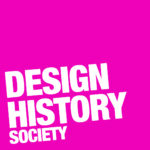Written by Dr. Sue Perks
In conjunction with the exhibition Give Me a Sign: The Language of Symbols, designer and researcher Sue Perks offers an expansive look into the Henry Dreyfuss Archive held at Cooper Hewitt. The archive contains detailed documentation on Dreyfuss’s Symbol Sourcebook: An Authoritative Guide to International Graphic Symbols, which serves as the basis for the exhibition.
While reviewing Henry Dreyfuss and Paul Clifton’s[1] many thousands of letters to organizations asking for symbol information, correspondence from Dr. N. Howard-Jones of the World Health Organization (WHO) came to light that was more concerned with symbols from a different age: Isotype (The International System of Typographic Picture Education) [2] developed by Otto and Marie Neurath in Vienna in the 1920s. Howard-Jones was adamant that Isotype should not be forgotten and criticized Dreyfuss and Clifton for not initially including it in the symbol information they sent when they wrote asking for information on symbols from WHO.
On October 18, 1968, while working under a grant from the National Endowment for the Humanities (to fund a feasibility study on Dreyfuss’s proposed symbol dictionary project),[3] Clifton wrote to The National Citizens Committee for WHO in New York. He had been given the contact by Dr. Richard Orr, Director of the Institute for Advancement of Medical Communication, believing that WHO would be able to supply examples of international symbols relating to the medical profession. Clifton explained that they would need copies of the symbols; information on their derivation, explanation, and application; and any additional reference sources. This was quite a tall order for a request out of the blue, so referrals were paramount to obtaining the trust required for organizations to invest the time it would need to supply this information.
Clifton received no reply to his letter, and politely wrote again on December 12, 1968. Clifton was very thorough, but his letter had perhaps not reached its destination.
The next piece of correspondence for WHO (Fig. 1) was sent to Dr. M. G. Candau, Director General on January 23, 1969, again asking for graphic symbols and again quoting Orr while also reinforcing the importance of the work: “Our project has received enthusiastic, official endorsement from such groups as the U.S. National Commission for UNESCO, USA Standards Institute (USASI), National Bureau of Standards, International Council of Societies of Industrial Design (ICSID), American Institute of Architects, American Institute of Graphic Arts (AIGA), and Industrial Designers Society of America.” He enclosed a reprint of a recent article “Symbols: Communicating Without an Accent” in USASI’s Magazine of Standards (Fig. 2) to give an idea of the general direction of their research.
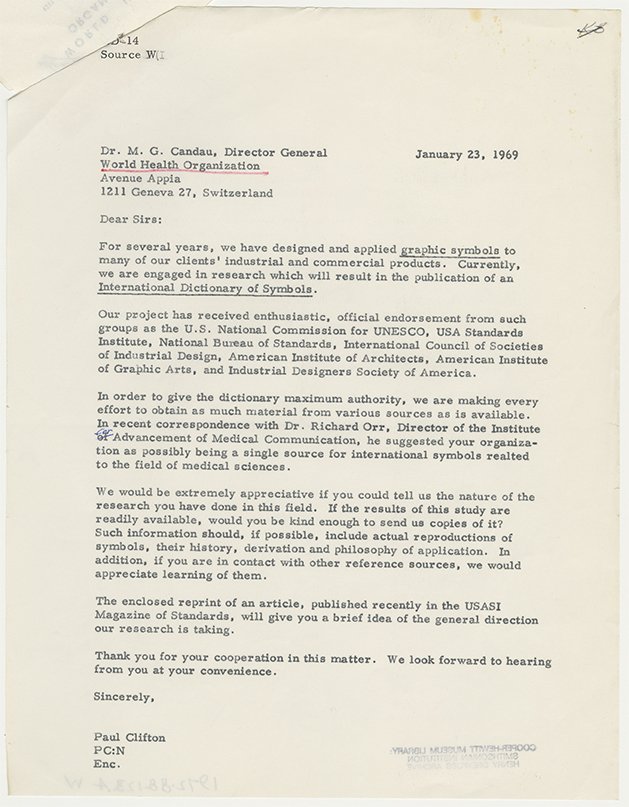
Fig. 1: Letter, Paul Clifton to Dr. M. G. Candau, January 23, 1969; Henry Dreyfuss Archive
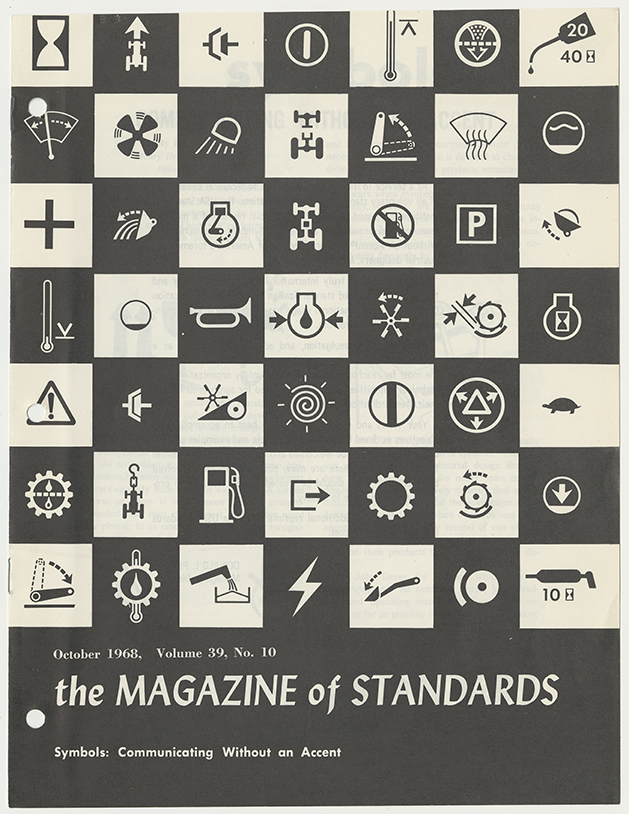
Fig. 2: Reprint, “Symbols: Communicating Without an Accent,” in Magazine of Standards, October 1968; Henry Dreyfuss Archive
Finally, a reply was forthcoming on February 10, 1969, from Howard-Jones, WHO’s Director of the Division of Editorial and Reference Services (based in Geneva, Switzerland) who wrote back saying that the USASI magazine was missing from the correspondence. On March 14, 1969, Clifton replied, apologizing for the omission, and sending the USASI article along with an article by George Boehm (reprinted from IBM’s 1968 THINK Magazine, which really does set out the thinking behind Dreyfuss’s symbol project, Fig. 3). Clifton once again repeated his request for symbols (which shows his patience and tenacity).
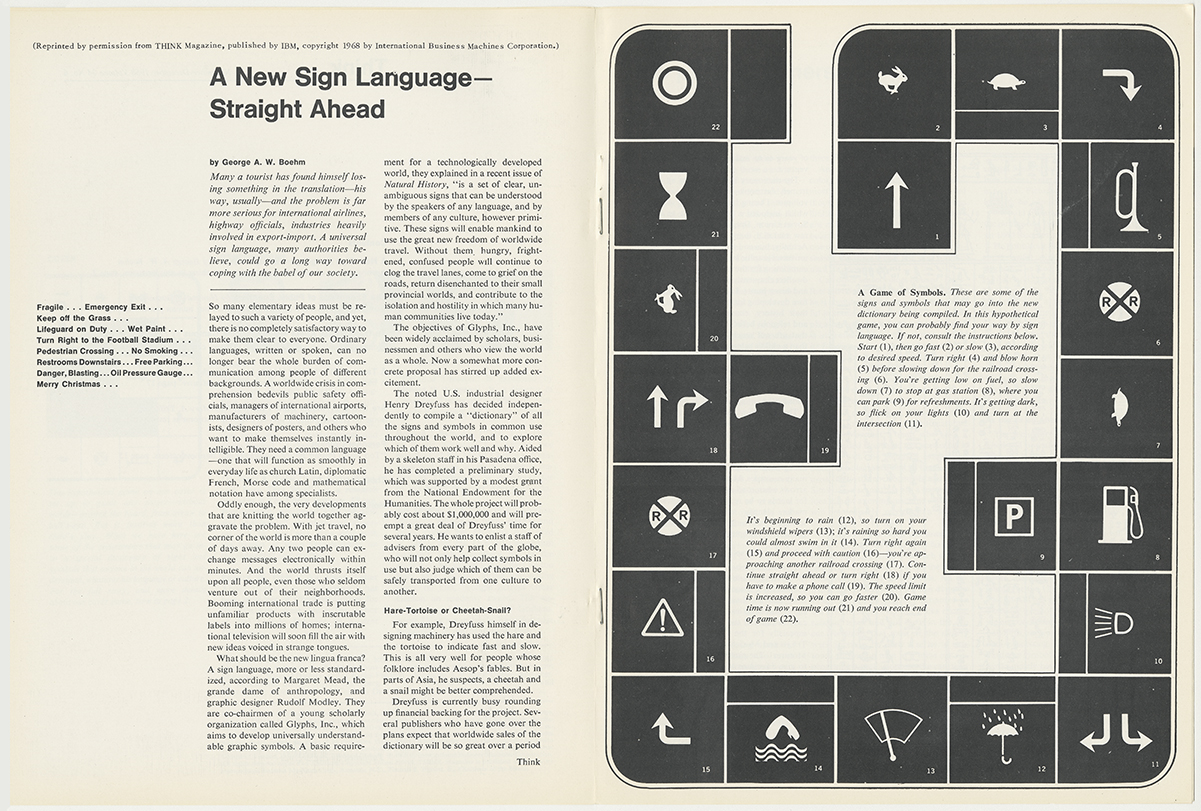
Fig. 3: Reprint, George A. W. Boehm, “A New Sign Language—Straight Ahead,” THINK Magazine, published by IBM, 1968; Henry Dreyfuss Archive
Howard-Jones replied very quickly (considering it was via Airmail) on March 19, 1969 (Fig. 4), saying that WHO had not initiated any activities regarding graphic symbols in the health and medical field and regretfully was unable to send any information at that point. But he continued:
“However, I would add, as a purely personal comment, that I was very surprised to see in neither of the publications that you enclosed any reference to the pioneer––and very sophisticated––work of Otto Neurath in this field. During the years 1925–1934, Neurath developed in the Gesellschafts- und Wirtschaftsmuseum in Vienna, a very excellent system of graphic symbols with many applications. He called this system ‘ISOTYPE’, which stood for International System Of Typographic Picture Education. In 1934 Neurath and his collaborators moved to The Hague, where they continued their work at the Mundaneum Institute. Neurath founded and directed the International Foundation for the Promotion of Visual Education,[4] and described the principles and rules of ISOTYPE, with nearly 40 illustrated examples, in a small book International Picture Language (Fig. 5) which was published in English in London in 1936 by Kegan Paul, Trench, Trubner & Co. Ltd.[5] It appears to me that it is, in general, easier to recognize the meaning of the ISOTYPE symbols than of the examples given in the publications that you enclosed.” [Dreyfuss adds an exclamation mark to this in pencil on the letter.]
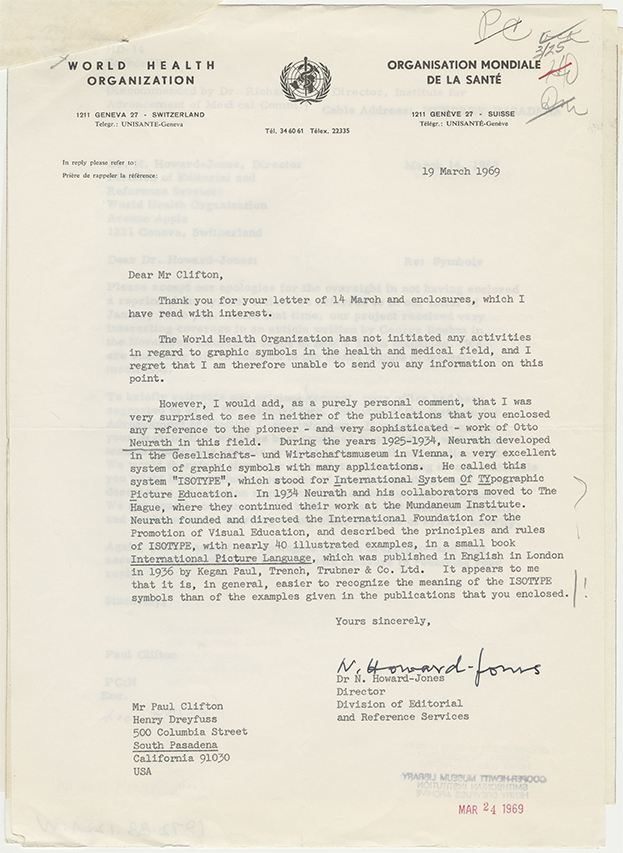
Fig. 4: Letter, Dr. N. Howard-Jones to Paul Clifton, March 19, 1969; Henry Dreyfuss Archive
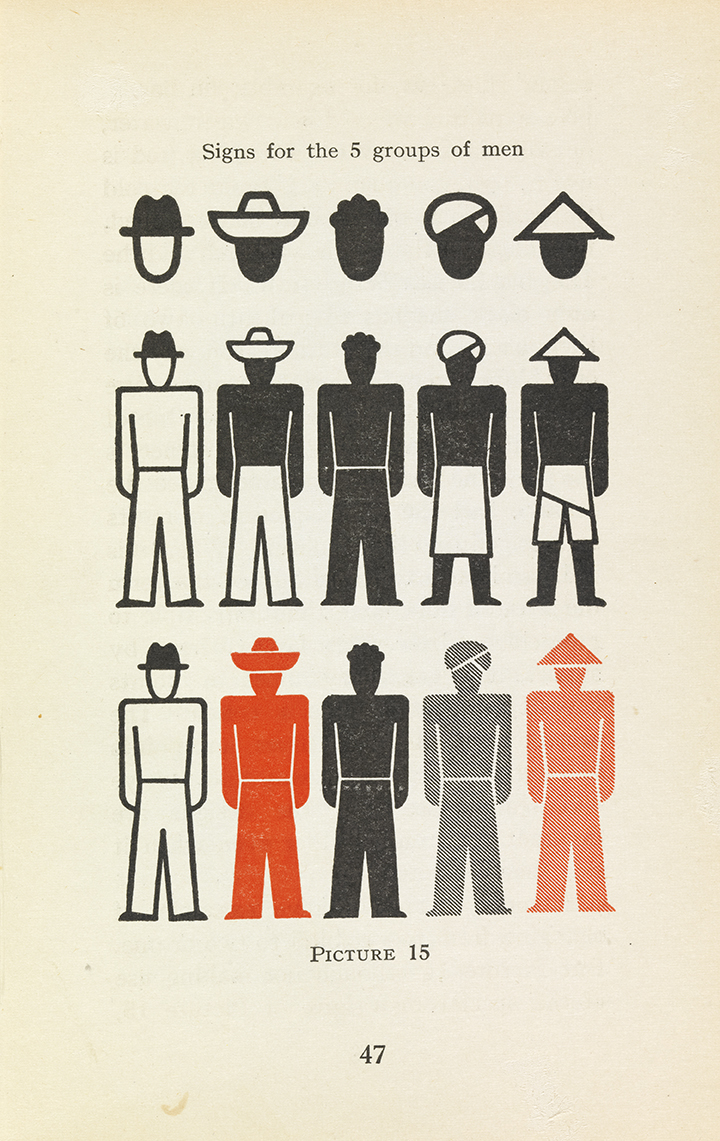
Fig. 5: International Picture Language: The First Rules of Isotype by Otto Neurath (1936); Smithsonian Libraries & Archives, Gift of Henry Dreyfuss, PM8999 .N48X
But of course, Dreyfuss was aware of Isotype. He had instigated a one-year project, the “Preparatory Survey on Communication through Graphic Symbols” between 1958 and 1960, with Marie Neurath, Rudolf Modley, and Martin Krampen to investigate the feasibility of producing a symbol dictionary (funded by Dr. Alvin Eurich, of the Foundation for Advancement of Education, a staunch supporter of Dreyfuss’s work). Dreyfuss would have also known of Isotype from Modley of Glyphs, Inc. Modley interned with Neurath at the Gesellschafts- und Wirtschaftsmuseum in Vienna in the mid 1920s and famously brought his own version of Isotype to America in 1931 and was responsible for popularizing the pictogram in American publications during the 1930s and ‘40s. Finally, there was a copy of the 1930 Gesellschaft und Wirtschaft atlas in Henry Dreyfuss’s personal library that further sets out Neurath’s brand of picture language in a variety of charts and maps.
Clifton was also aware of Isotype and replied on March 25 stating, “The omissions of any references to Otto Neurath in the material we sent you was certainly not intentional. We have a great deal of respect for the ‘pioneer’ work he did with ISOTYPE. We are fortunate to have two of his original publications in our symbol library and we have corresponded with Marie Neurath regarding her system for graphically classifying symbols.” Indeed Marie, although not mentioned in the credits at the back of the Symbol Sourcebook, was seen as instrumental in providing ideas for how to classify shapes in the “Graphic Form” section of the book, loosely based on her work from the 1958 “Preparatory Survey.” Clifton had previously written to Marie in 1968 asking for information on these ideas from 1958–60. She co-operated by sending annotated sketches of her card index system.
So, it is hardly surprising that one of the features at the beginning of the Symbol Sourcebook giving examples of the work of historic symbol pioneers should feature Marie Neurath’s “Isotype: Education through the Eye” (pages 24–25, Fig. 6). Dreyfuss was forward looking, but never forgot the heritage that he was building on.
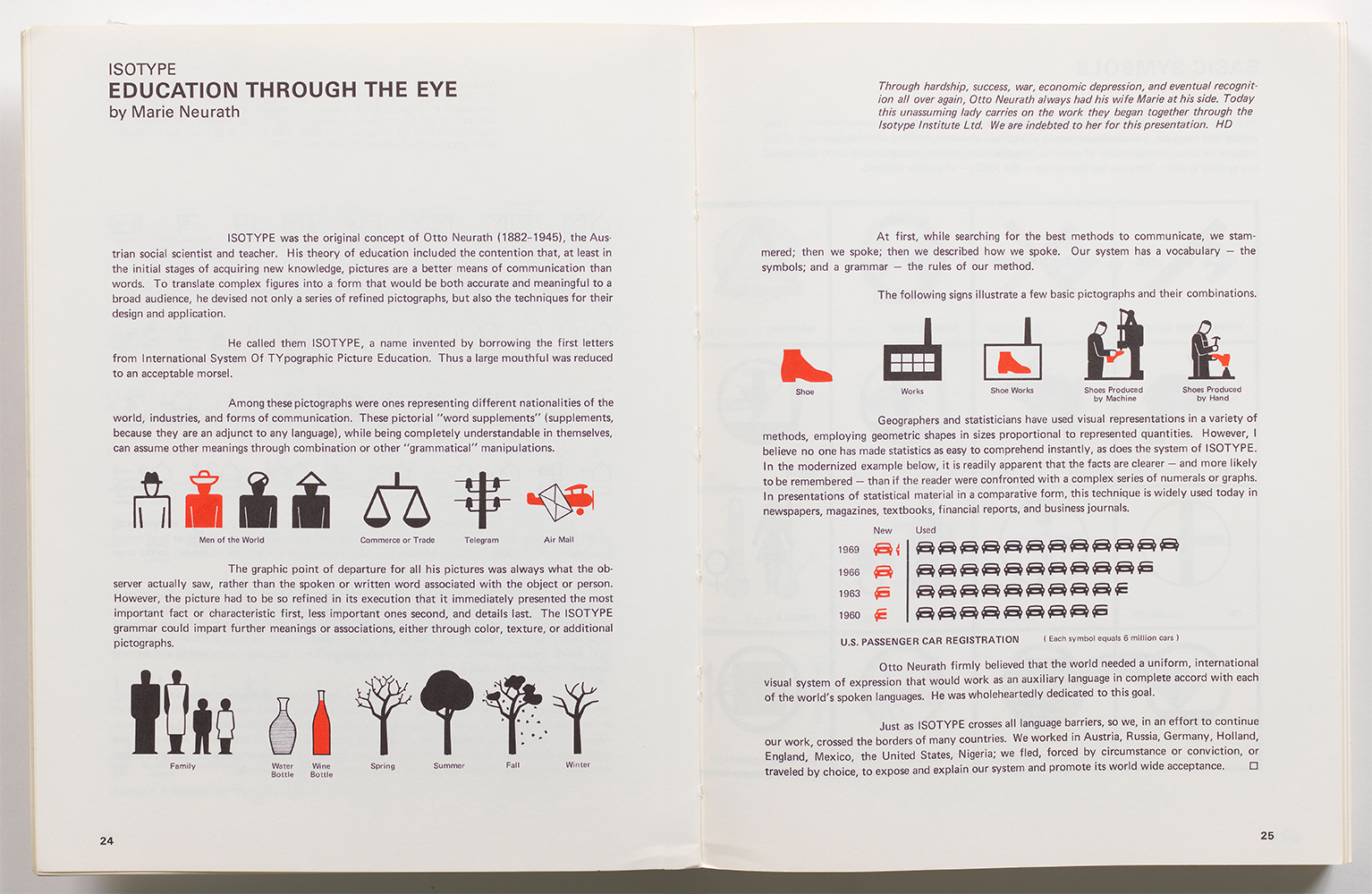
Fig. 6: Marie Neurath, “Education through the Eye,” Symbol Sourcebook: An Authoritative Guide to International Symbols; Henry Dreyfuss Archive
Dr. Sue Perks is a designer, archival researcher, and writer on Isotype, museum design, and Henry Dreyfuss’s work with symbols. She was awarded a PhD from University of Reading in 2013. She regularly presents at international design conferences and co-founded The Symbol Group in 2022.
The exhibition Give Me a Sign: The Language of Symbols is on display at Cooper Hewitt through September 2, 2024.
Notes
[1] Paul Clifton started work for Dreyfuss in his Pasadena office in 1962. In his 1970 resumé he describes his role as supervising office symbol research program and being closely involved in all symbol work done for clients.
[2] For further information on Isotype, see Isotype: Design and Contexts 1925–1971, eds. Christopher Burke, Eric Kindel, and Sue Walker.
[3] On November 6, 1968, Dreyfuss submitted a report to the National Endowment for the Humanities entitled “The Design of a Research Project to Determine the Nature and Feasibility of an International Dictionary of Symbols.” It covers the period from May 15, 1968, to September 30, 1968.
[4] The correct title is the International Foundation for Visual Education, which Neurath founded in The Hague in 1933. The Mundaneum Institute (also in The Hague) was founded in 1934.
[5] This can be viewed online in the Internet Archive.
Acknowledgments
Some funding contributed by the Design History Society Research Publication Grant.
